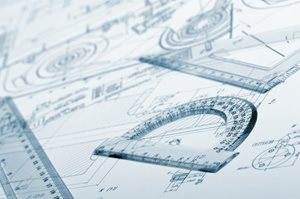7/12/2019
BY: BOB JENKINS
 When I was in high school, I took a road map class. My driving instructor at the time believed it was essential knowledge in driving, so he taught everyone how to properly read and fold a road map. Although this seems far removed from actual driving, it really was a beneficial skill to have. Until, of course, the onset of Google Maps, when I ended up throwing away all my maps and had to think of new ways to use the map pockets in my car doors.
When I was in high school, I took a road map class. My driving instructor at the time believed it was essential knowledge in driving, so he taught everyone how to properly read and fold a road map. Although this seems far removed from actual driving, it really was a beneficial skill to have. Until, of course, the onset of Google Maps, when I ended up throwing away all my maps and had to think of new ways to use the map pockets in my car doors.
Fast forward to today. Young people interested in engineering programs have taken AutoCAD courses since high school. Virtually all of them are proficient in drawing and creating 3D models that make a computer screen come alive with visuals.
Painfully, however, many high schools no longer provide the option of taking a drafting class, which forms the basis of all CAD drawings. This fundamental level of training is now glossed over, skipping straight to the most technological and advanced forms of drafting without teaching essential skills in blueprint reading.
During my time in high school, in addition to the road map class, I attended courses focused on drafting, woodworking and sheet metal. There still may be courses offered in automotive repair now, but nearly all drafting classes have disappeared. This seemingly antiquated, outdated skill has been largely forgotten and replaced with its modern counterpart.
If blueprints had gone the way of road maps, this wouldn’t matter as much. However, blueprint drawings and drafting are just as critical now as they have been in the past, requiring workers to possess a certain set of skills in order to manage daily tasks in design and production.
Many aren’t aware that when you push the ‘print’ button using AutoCAD or any other 3D modeling software, such as UGS, IDEAS or Catia, the result is a blueprint. The computer knows all the rules for blueprints and turns them out via software instruction. The blueprint is then given to an unknowing recipient and, unless that worker has somehow learned to interpret them, the business is doomed with their lack of understanding.
The importance of understanding blueprints and being able to interpret and change them cannot be understated. This is especially true in a manufacturing environment, where production and manufacturing process design often are dependent on blueprints. Despite the lack of attention in schools, learning skills in blueprint reading and drafting should not be overlooked by those who work in manufacturing.
Whether you were classically trained in blueprint reading or learned on the job, test your knowledge with the short quiz below to see if your skills pass the test. Quiz answers are included at the end of this post.
1. Which line below represents a phantom line?
A. ____________________________________________
B. _______ _ ________ _ ________ _ _______ _ ____
C. ______ __ __ ______ __ __ ______ __ __ _______
D. __ __ __ __ __ __ __ __ __ __ __ __ __ __ __ __
2. What is a phantom line?
While this knowledge might seem outdated or unnecessary in this modern age, the opposite is true. And with an increasing number of millennials entering the workforce with little to no experience in drafting and blueprint reading, investing in additional training has become a necessity if manufacturers seek to employ skilled, capable workers.
To fill this gap in knowledge, The Center offers a Blueprint Reading class geared toward those who have never sat through the “line by line” training process. In just one day, participants gain the skills and insight necessary to become a competent blueprint reader. Learn more about this course and view the upcoming schedule of classes here.
Quiz Answers:
1. C. ______ __ __ ______ __ __ ______ __ __ _______
2. A phantom line represents an alternate position of a moving part.
MEET OUR EXPERT
 Bob Jenkins, Quality Program Manager
Bob Jenkins, Quality Program Manager
Bob Jenkins is a Quality Program Manager at The Center. In his role, he manages and delivers training and implementation assistance to organizations in the field of quality improvements. As an Exemplar Global Certified Auditor, Bob assists clients with Quality Management System implementations such as ISO 9001:2015 and IATF 16949. He provides internal auditor training and consulting services for various groups, including production, production management and corporate management, in disciplines involving the automotive core tools of quality systems consisting of FMEA, PPAP, APQP, SPC, MSA, and Root Cause Analysis/Problem Solving. Bob also teaches blueprint reading.
Since 1991, the Michigan Manufacturing Technology Center has assisted Michigan’s small and medium-sized businesses to successfully compete and grow. Through personalized services designed to meet the needs of clients, we develop more effective business leaders, drive product and process innovation, promote company-wide operational excellence and foster creative strategies for business growth and greater profitability. Find us at www.the-center.org.
Categories: Other,
Workforce